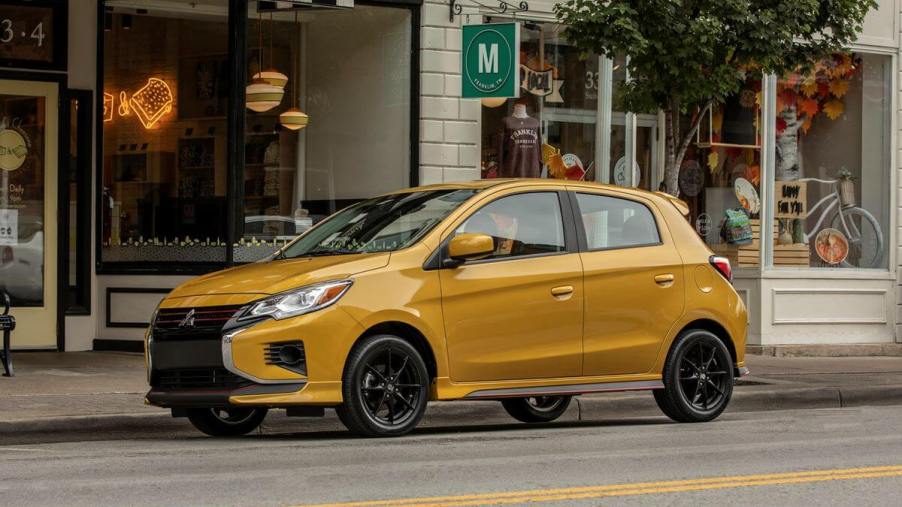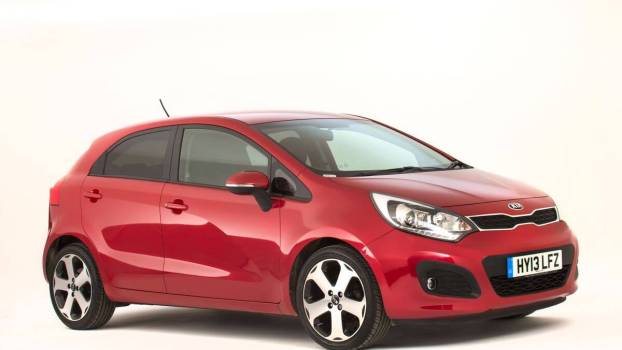
What Is an Econobox Car?
There’s no standard formula for an economy car, but the term is affixed to small cars that are generally easy on the wallet. While most are familiar with this term, “econobox” also exists in the automotive vocabulary. So, is an econobox different from an economy car, or are they synonyms? Here’s a look at the history, meaning, and current landscape of econoboxes.
What is an econobox?
An econobox shares many of the same attributes as an economy car, but the terms aren’t necessarily interchangeable.
Like an economy car, an econobox is designed around affordability and offers low starting prices, according to Driving. As such, they are generally smaller and more basic in the features and amenities offered. Econoboxes and economy cars are powered by smaller engines that put a far greater emphasis on fuel efficiency over performance, and front-wheel drive is ubiquitous due to the cost savings over rear-wheel or all-wheel drive. Due to their relatively basic nature, econoboxes are also affordable to maintain and repair.
In short, an econobox is a frill-free mobility akin to an economy car. Where the two terms differ is down to their overall shape. Economy cars can take many forms, but generally, they are a bit larger than econoboxes. Econoboxes are also more, well, boxy.
Economy cars and econoboxes enter and re-enter the automotive fray
The early decades of the automotive industry, particularly in the U.S., didn’t place a notable focus on small cars. That’s why another automotive term, “land yacht,” cemented its place in the automotive lexicon in the 1950s. A notable example is the 1958 Lincoln Continental, which stretched to a massive 229 inches overall. That’s a few inches longer than the 2005 Ford Excursion, a massive nine-passenger SUV based on a super-duty pickup.
However, as documented by Driving, the 1973 oil crisis, which seemingly quadrupled the cost of a barrel of oil overnight, led manufacturers to re-evaluate their lineups. Suddenly, there simply wasn’t enough oil and gasoline around to power big cars, or the price for doing so presented harsh economic impacts for the average car owner.
As such, economy cars and econoboxes were introduced to ease the strain on car owners’ wallets.
These affordable cars stuck around, though the rise in popularity of SUVs in the 1990s into the 2000s led to an influx of large models with a ravenous appetite for gasoline. That led to the development of the aforementioned Ford Excursion.
However, the 2008 financial crisis helped drive a resurgence of econoboxes. As detailed by Business Insider, the “Big Three” U.S. automotive companies — GM, Ford, and Chrysler — faced insolvency, oil prices shot through the roof, and many car owners struggled with payments on pricey, large SUVs and their insatiable thirst for gasoline. As such, more drivers began turning away from large cars for the affordability of econoboxes, just as they had done several decades before.
The modern landscape of econoboxes
The 2008 financial crisis had long-lasting impacts on the automotive industry. Still, in recent years, econoboxes that either had a greater appeal during the economic downturn or made their debut because of it have been discontinued or are no longer offered in the U.S. Some of these models include the Chevy Spark, Toyota Yaris, Ford Fiesta, Nissan Versa Note and Honda Fit. With the loss of these models, the econobox market considerably shrank.
However, some econoboxes, like the Mitsubishi Mirage and Kia Rio 5-Door, continue to be sold at new-car dealerships. These models, easily recognizable as econoboxes due to their tiny footprints and hatchback configuration, can all be had in their 2023 guises for under $18,000 MSRP.
However, the popularity of SUVs may lead to changes in how the term econobox is applied. With more hatchbacks and sedans leaving the market, a frill-less subcompact SUV could also be considered one. Some examples include the Hyundai Venue, Nissan Kicks, Chevrolet Trax, or even the Kia Soul. These boxy subcompact SUVs all start around $20,000 with small footprints and a focus on overall affordability, making them, essentially, higher-riding econoboxes.




